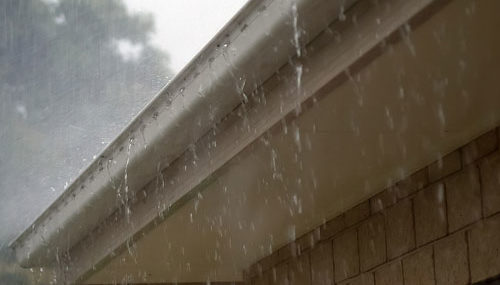
While you can avoid roof leaks, it's often inevitable, that is, you can't avoid them totally. Many factors contribute to the leak of flat roofs. Factors like poor workmanship and construction, the lifespan of the roof, etc. Now, when you notice a leak or several leaks on your roof, you have to take some measures to control and manage them.
Before looking at the measures to control your flat roof's leakage, it's important to elaborate on the vital causes of the leakage. This will give you insights into how to find and control your flat roof's leakages.
The following are common problems that cause leakages on your flat roof.
Inadequate drainage: If your roof can’t drain water properly, if not given immediate attention, it will become standing or pooling water. As you might know, this will make the membrane of your roof weaker and vulnerable to water. When this happens, roof leakage Is surely expected.
An old roof: The more your flat roof gets closer to the end of its life span, the more vulnerable it will be to leaks. The major contributing factor is how it has been exposed to sun, water, and air for a long period. These 3 components make your roof weaker as the day, week, month, the year goes by.
Damaged flashing: Improper installation or damaged flashing tends to make the corners of the roof exposed to climate conditions like rain, snow, sun, etc. If not taken care of, it will cause leakage on your flat roof.
Problematic roof membrane. Cracks, blistering, tears, and shrinking of the flat roof membrane will cause the internal part of the flat roof to be vulnerable to leaks and water damages.
This is the question you are probably asking yourself right now and the main reason you are currently reading this article. If you want to minimize costs and do minor repairs to your flat roof leaks, then the following steps will guide you on what to do when you notice that your flat roof is leaking
Find The Leak
For a start, you should inspect your flat roof and look for the source of the leak from the inside of your roof. The water might have moved along your flat roof through the leak and pooled at different angles, which means the leak may not be the area that has most of the water. You should take a few measurements of the area where you assume a leak alongside nearby walls.
Get On The Roof
You should take the measurements you made from the interior and commence the search for the leak on the flat roof. If no damage is obvious, look for any damage to the roof membrane near any flashing or vents on the roof. You may have to use a ladder to access the roof, but make sure the ladder is securely positioned on the ground. If your roof is too high, if you feel it is risky, or if you cannot find the leak, then you need to employ the service of a professional roofer to give you a concise and detailed report of how and where the leak originated from.
Remove Any Debris
Your flat roof may have debris that can hinder your work or might even cause further damages. You should carefully get rid of any foreign objects from the area near the roof leak before starting your work. You will also be able to determine if your roof is simply facing age-related wear and tear or if it was damaged by a storm.
Dry The Area
Due to the nature of flat roofs, they are often wet. So, before repairing any area of your flat roof, ensure you clear the water. Professional assistance will be needed if a large amount of water is running in between the layers of the flat roof.
Identify The Damage
You should look for any blisters on your flat roof, which can reveal that air or water has soaked between the layers of your flat roof.
You should also check for cracks or alligatoring, which usually reveals long-term sun damage. In this type of damage, you will have to decide which repair method is most suitable. If the damage is severe, the best option is to call a professional roofing contractor.
Cut The Damaged Area
If the flat roof leak problem is blistering, then you just need to carefully cut through the damaged membrane to get rid of any moisture that may be present in the flat roof.
You should also cut away all the damaged layers of your flat roof, but be careful not to damage the roofing underneath.
Note: Carefully dry the areas you want to repair before you move to the next step.
Apply Roofing Cement
You should place back the layers of the membrane you cut and apply roofing cement to the leak and also to the entire area of the flat roof underneath the membranes you cut away.
This will seal it and will also give a bond for the flaps of the membrane.
Nail It Down
Once you lay down the flaps of the blister, you should nail them properly to the flat roof to fully secure them in place and to seal the leak.
Make sure you are not nailing any wires underneath or any other sensitive conductor. Cover the nails with more roofing cement to seal any holes you may have created.
The aforementioned points are the proper steps you should know and do when you notice a leak or several leaks on your flat roof. But this can only help you with minor leaks. If by any chance, the damages to your roof are severe, you should call a professional roofer right away.
If you need expert advice and inspection regarding a leak or several leaks on your flat roof, do reach out to us at 68-38 Main Street #2 Flushing, NY 11367 (718) 489-4009 https://www.kingsqueensroofing.com/.